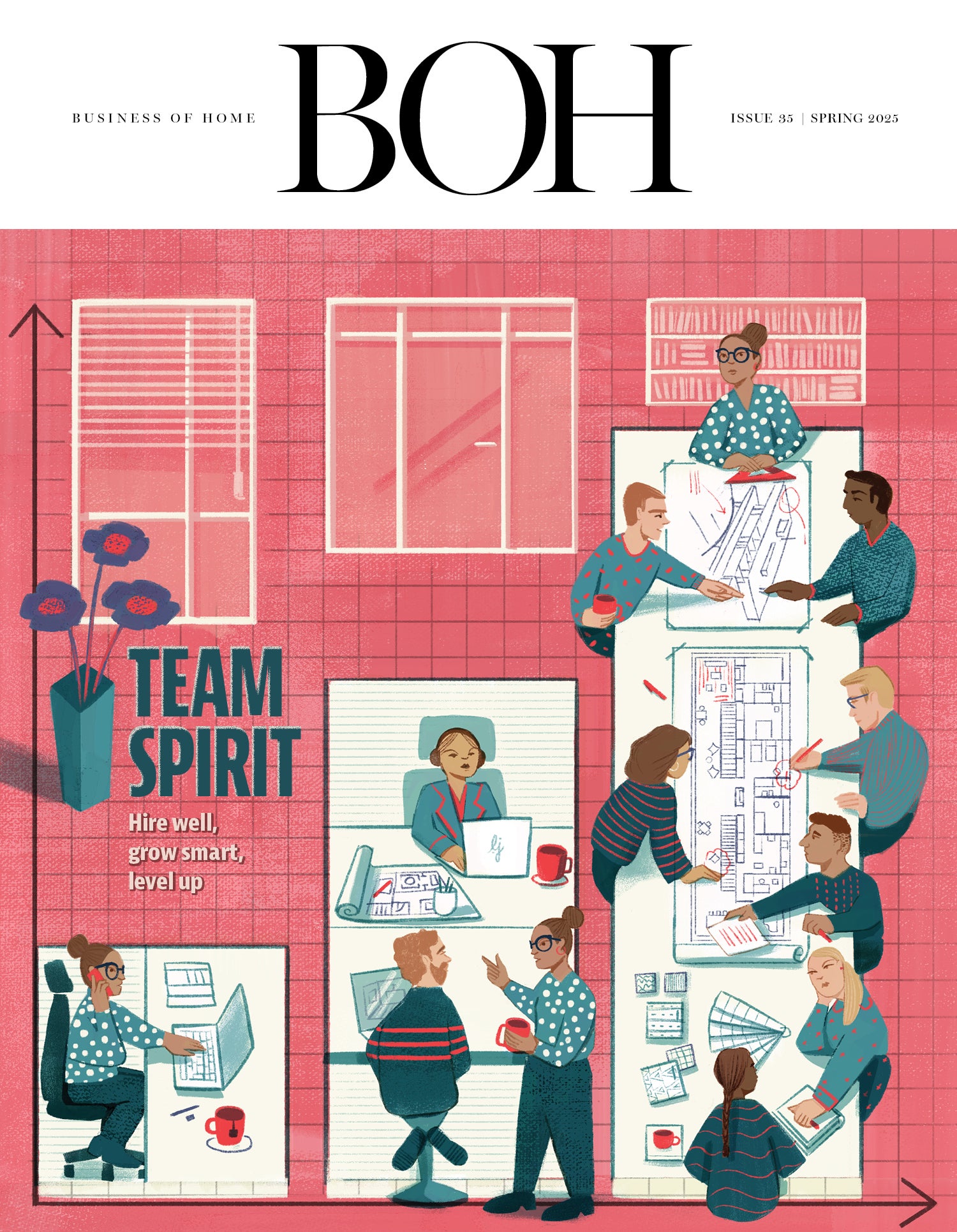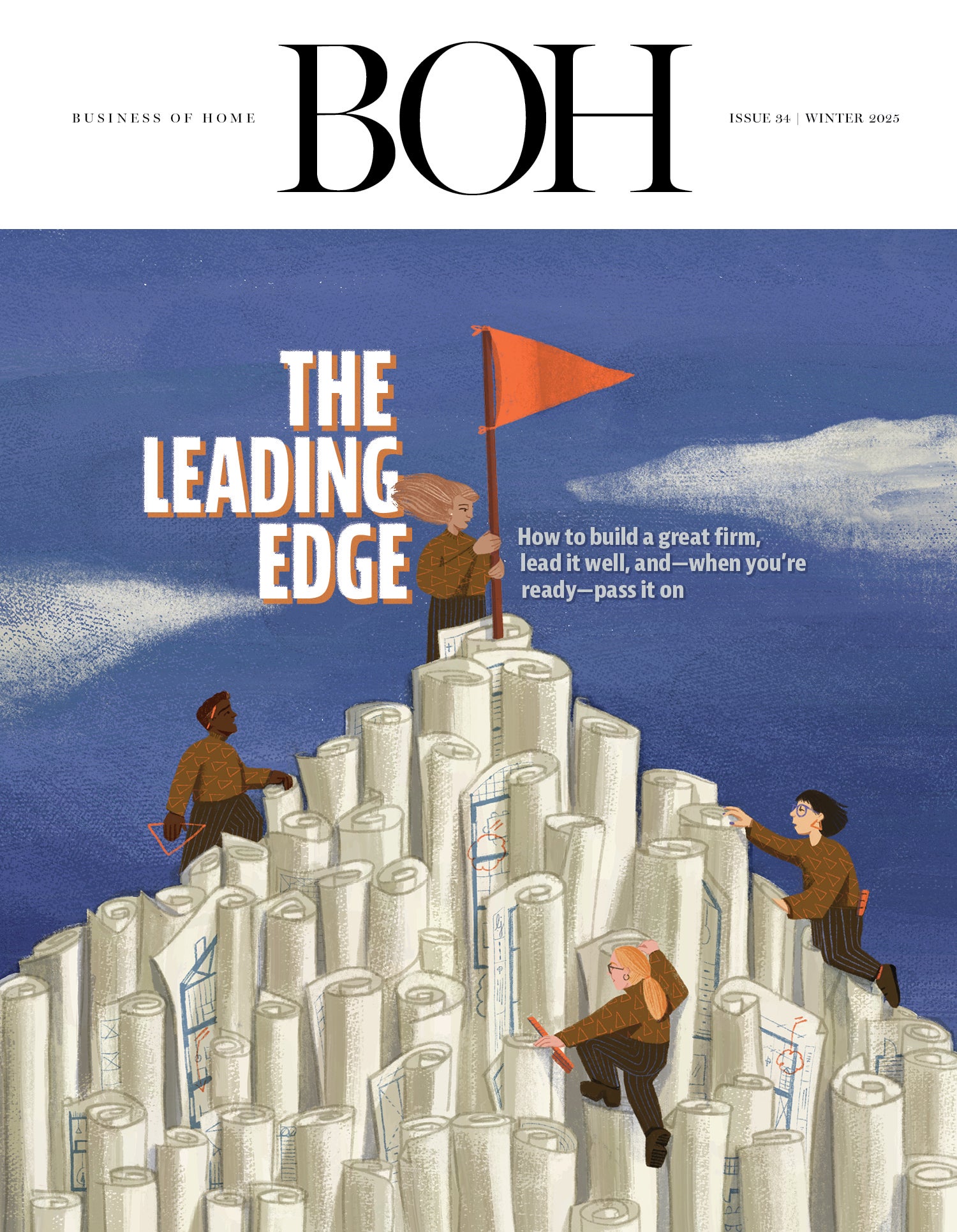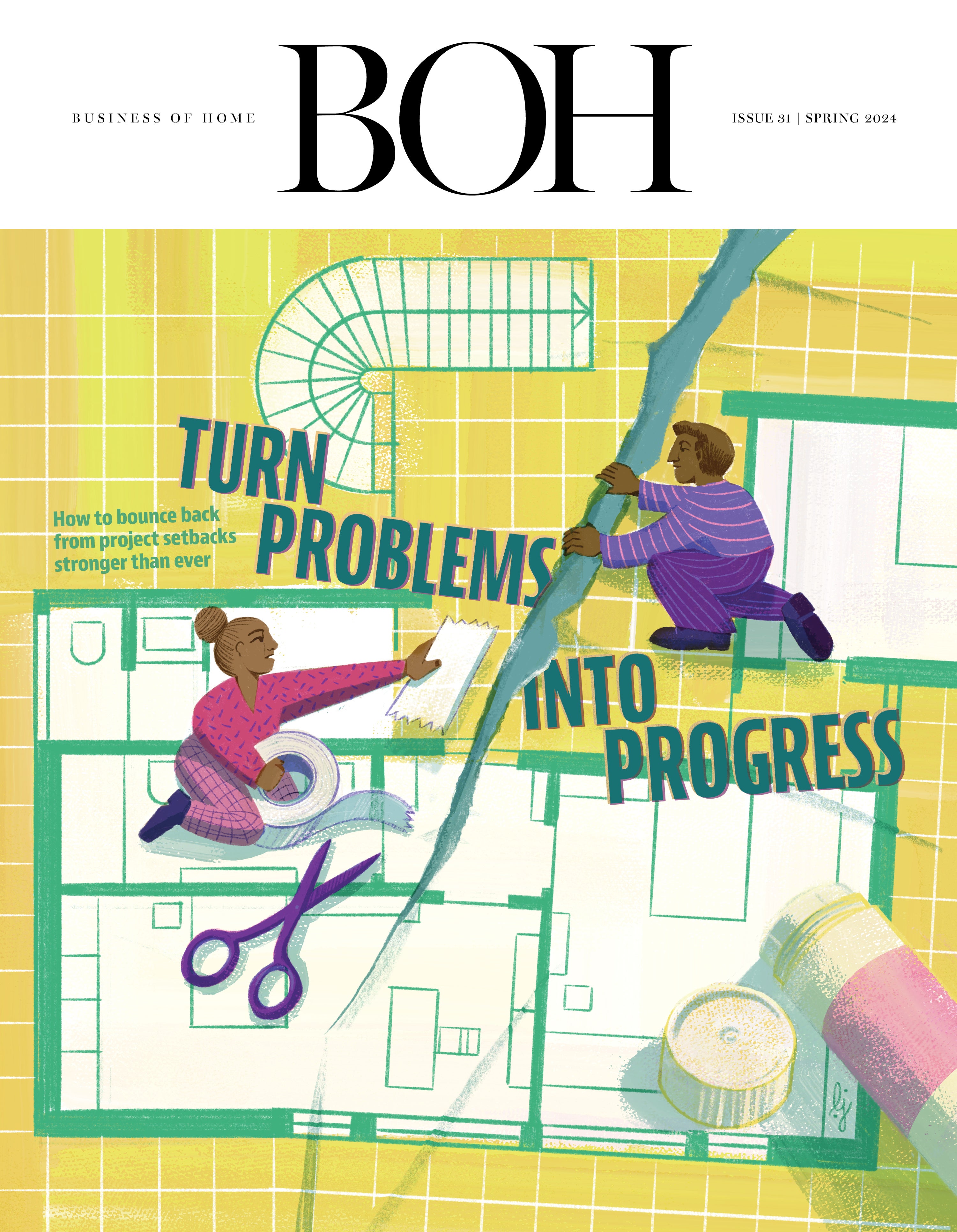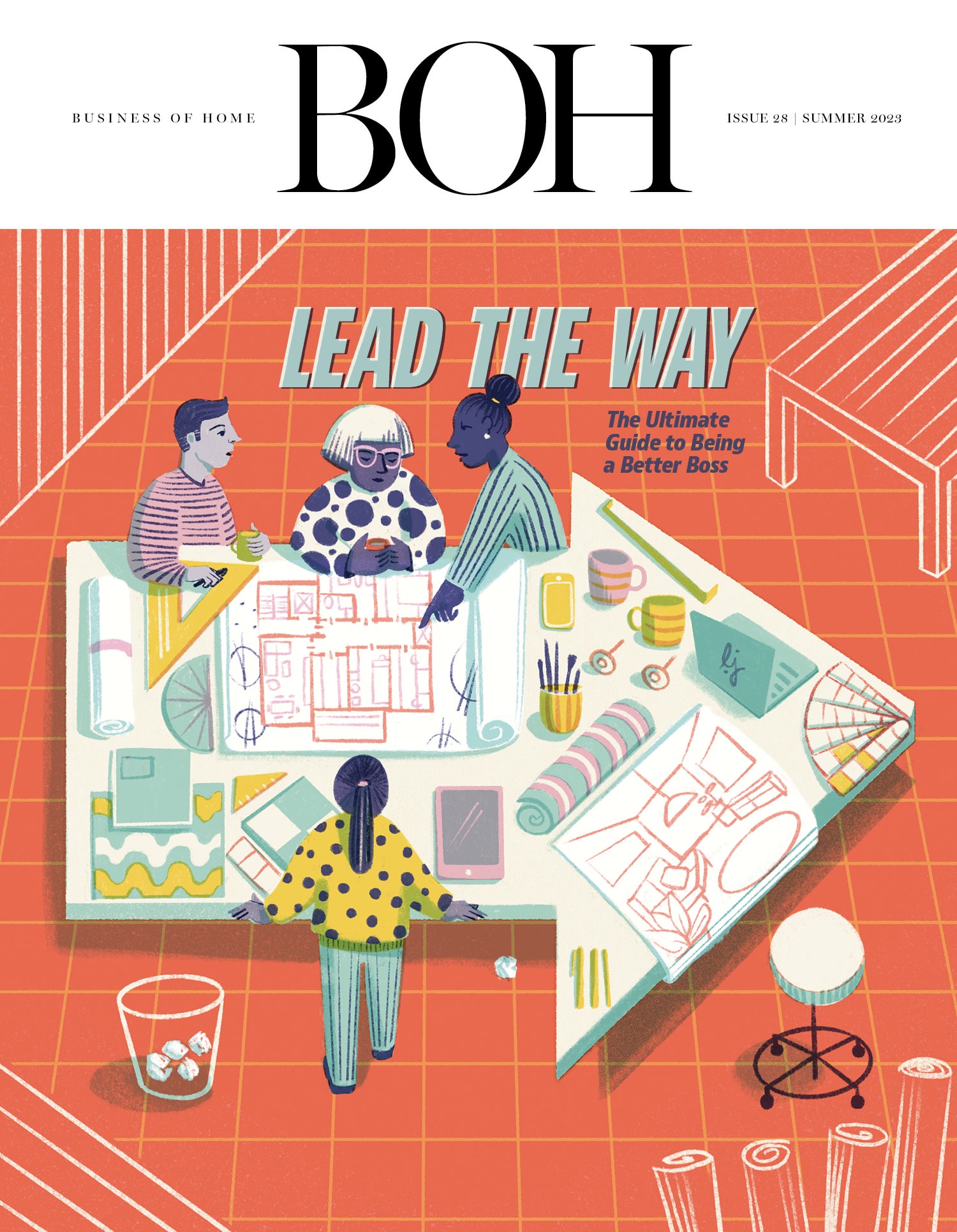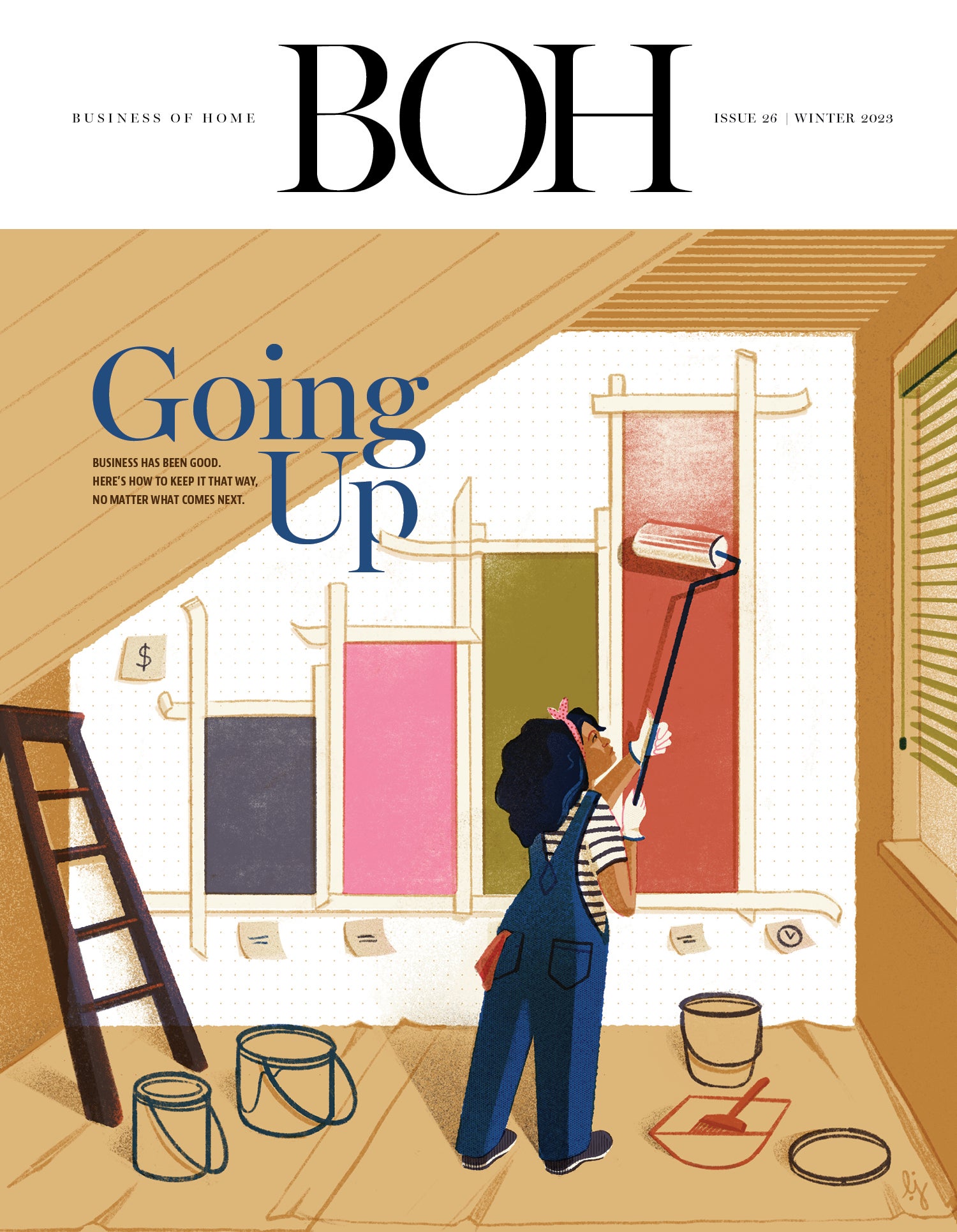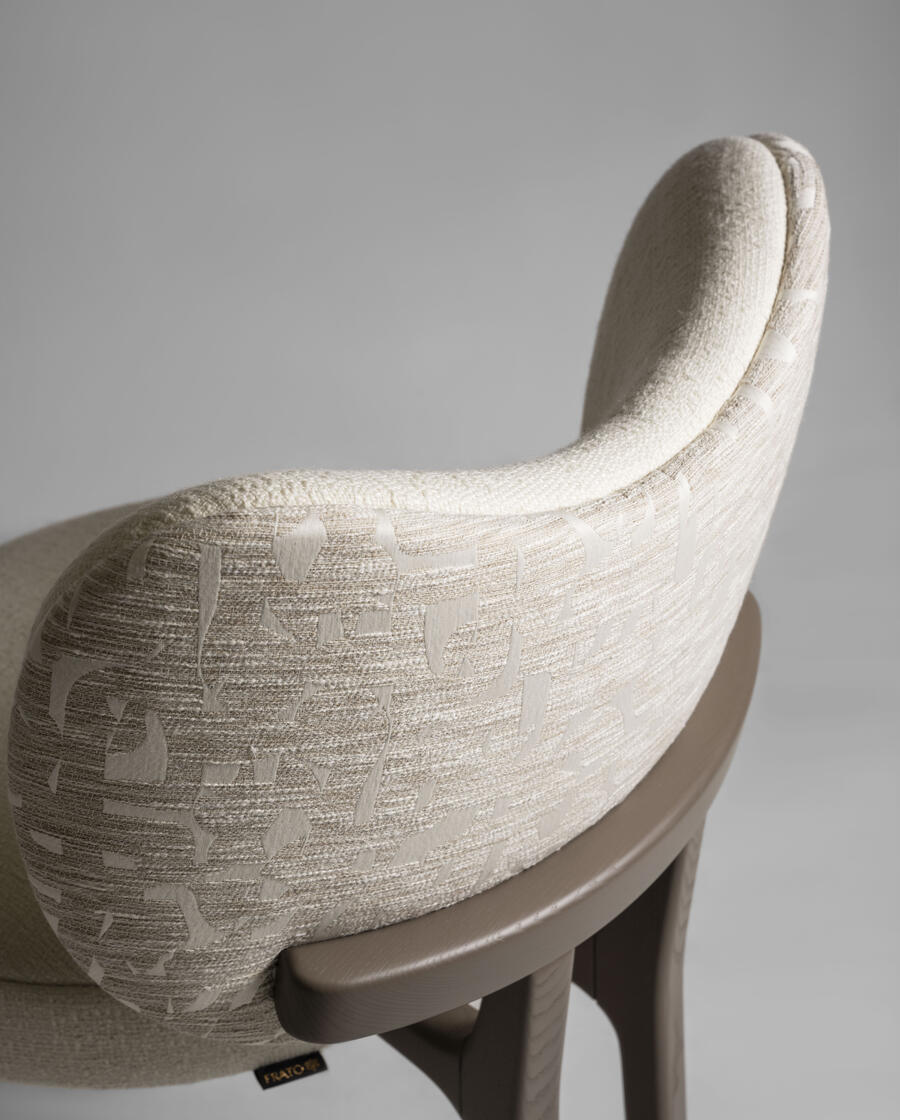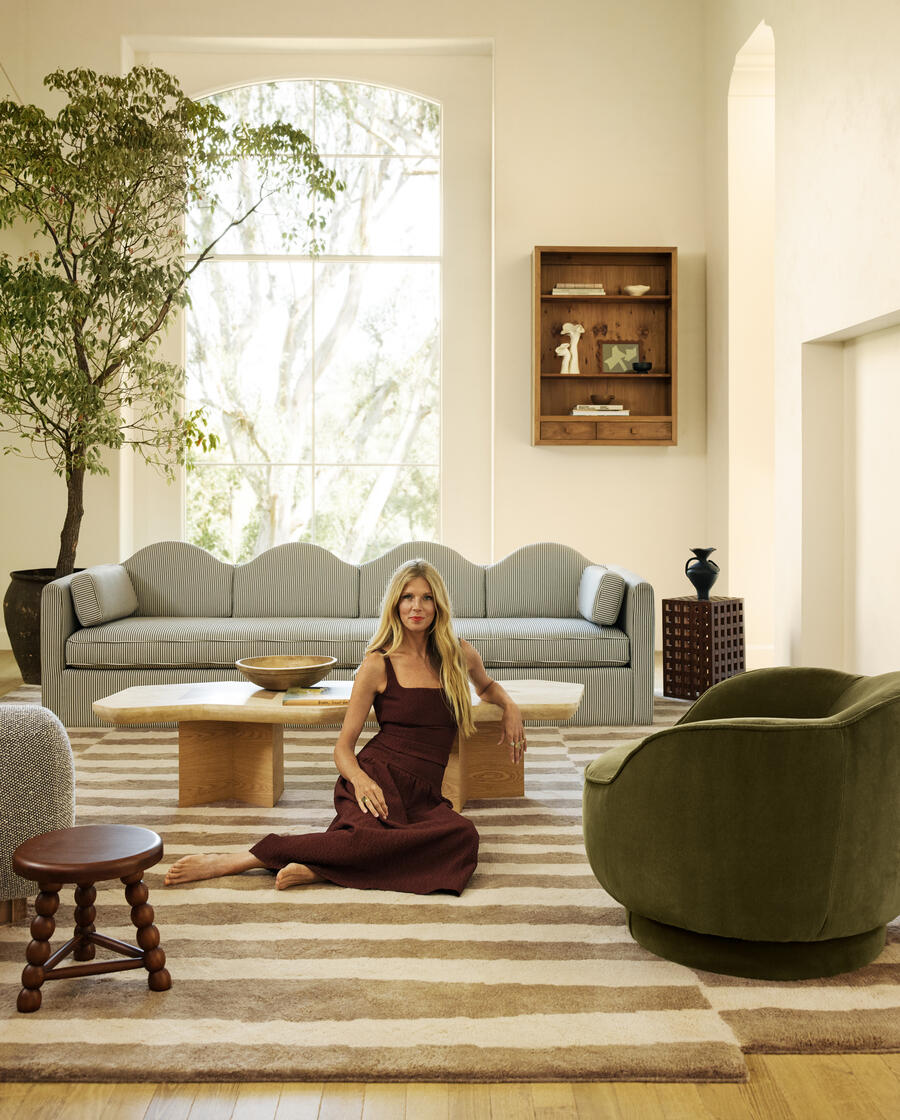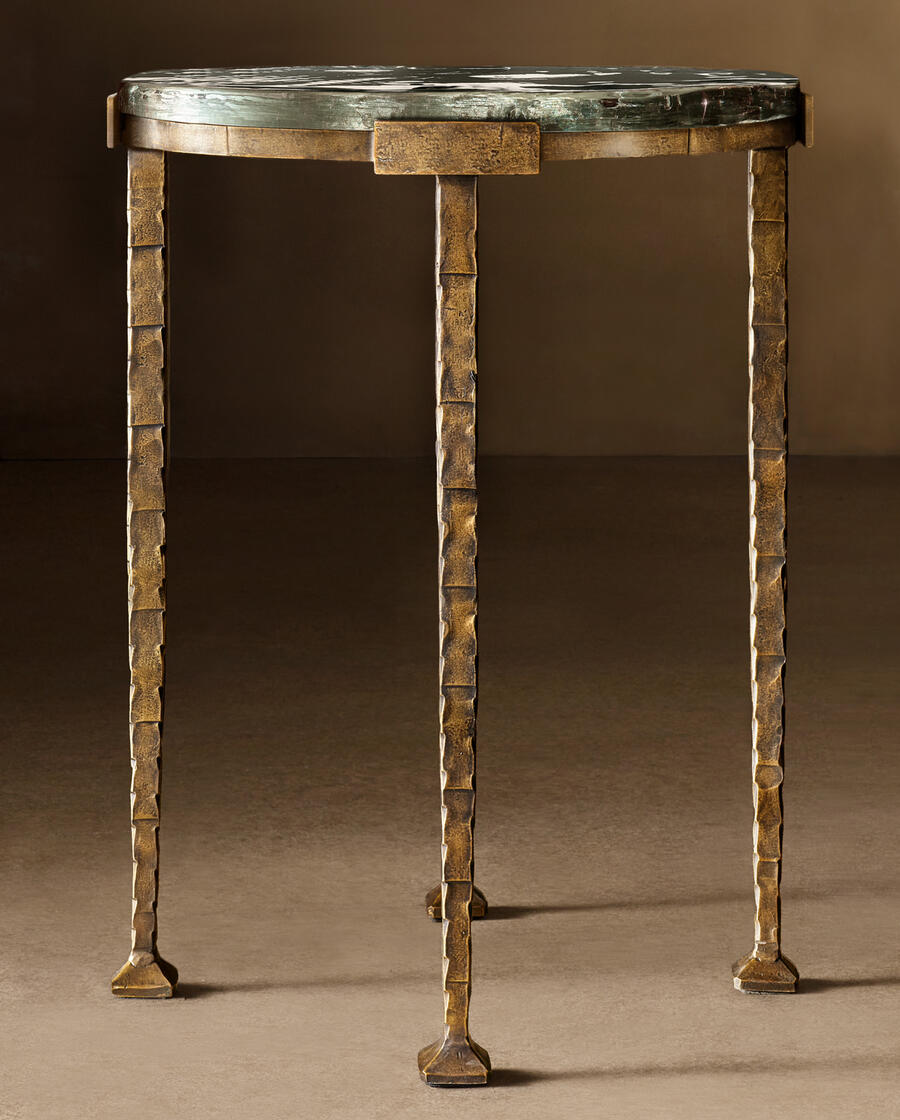You don’t have to look too hard to find a negative take on tariffs. Across the home industry, designers, retailers, brands, importers and consultants have spent the summer frantically following the ups and downs of a chaotic trade policy that seems to shift every week. Products have been discontinued. Prices have gone up. Countless hours have been spent scouring the globe for new sources. President Donald Trump’s recent announcement of a planned duty on all furniture imports seemed to break a dam, as everyone from San Francisco interior designer Tineke Triggs to the mayor of High Point took to social media to vent about the administration’s summer tariff roller coaster.
Maybe it’s no surprise that the buyers of the industry have not embraced tariffs with open arms. But what about the makers and manufacturers?
The president’s trade policy presents a complicated case for domestic producers. Many cheered his rhetoric around bringing furniture manufacturing back to the U.S., which has never regained the ground it lost to offshoring in the 1990s and 2000s. But as the policies took effect, the more immediate impact was a rise in input costs—from Chinese components to Indian yarn—which cut into profit margins. Then came the fear that surging prices would depress the overall market for home goods, erasing any gains it might have otherwise made.
“I remember walking the factory floor after the first round of tariffs hit, speaking with our department heads, and there was definitely some head-scratching,” says Rick Lovegrove, vice president of upholstery at Universal Furniture, which maintains both international and domestic production facilities. “The common question was: If the goal is to bring more business to U.S. factories, why are we now paying more for everything we need to make furniture—lumber, textiles, staples, mechanisms? And that’s on top of an already serious labor shortage. When you add it all up, these tariffs are significantly increasing our costs and making us less competitive in the global market.”
Other domestic producers have voiced similar sentiments in Wall Street Journal op-eds, on podcasts and in LinkedIn posts—not to mention off-the-record conversations that veer toward salty. Meanwhile, none of the large players across the country—whether in North Carolina, Mississippi or Michigan—have weighed in with a full-throated defense of the tariffs. One could be forgiven for assuming that U.S. makers are as unified as the importers in their frustration.
However, if you dig deeper, the picture is more nuanced. Some domestic producers believe that after the smoke clears, their businesses will gain ground. Some have already reaped benefits as tariff policies have gone into effect. In search of an objective snapshot of the landscape as it stands today, Business of Home spoke with a range of companies that domestically manufacture some or all of their products.
Interest Has Surged
A near-universal experience shared by domestic manufacturers: For the past four months, the phone has been ringing. Since the announcement of Trump’s sweeping global tariffs in early April, buyers have been intensely exploring U.S. production. “We’ve been getting more calls with top-100 retailers than ever,” says Anderson Gibbons, chief marketing officer of North Carolina–based textile mill Revolution Performance Fabrics. “Honestly, during the [period when tariffs were 145 percent on imports from China], it was a little exhausting. The tariffs have dramatically helped our business.”
Interestingly, the conversations don’t tend to be centered around price—aside from the brief window in which tariffs on Chinese imports shot up into triple digits, most buyers have been able to get a lower quote overseas. Instead, reliability is the coin of the realm. Buyers are looking at domestic producers to escape the chaos of a rapidly shifting tariff landscape—to lock in pricing and a timeline that will last months, not days.
“People come to us because they know they’re going to get the product,” says Veronica Schnitzius, president of American Leather, a Dallas-based furniture company that produces its own brand and manufactures private-label upholstery for high-end retailers. “Because of all of these tariffs, people are stopping containers, doing all kinds of crazy stuff. [Our differentiator is] reliability: We’re here, they know what they’re going to get with us.”
The caveat—and it’s a big one—is that this surge of interest does not appear to have turned into a surge of new revenue for all U.S. manufacturers. Both Gibbons and Schnitzius say that interest in domestic production has grown their business impactfully. But a more common experience among their cohort is that so far, those conversations about new business haven’t translated to an onslaught of orders.
“We’ve had an increase in interest, and more and more people talk to us, [but] we haven’t had any real growth at this point in time as a result of [tariffs],” says Gat Caperton, CEO of West Virginia–based wood furniture brand Gat Creek. However, Caperton—a proponent of tariffs in general—is confident that the leads will turn into revenue over the long haul.
“It’s a slow process. If you’re a business that’s set up to import furniture, it’s very hard to change and turn around and be a domestic operation, and it’s hard to do both,” he says. “If you were to say, ‘Hey, I want to develop a domestic-based product line,’ it takes a year. So it just takes time.”
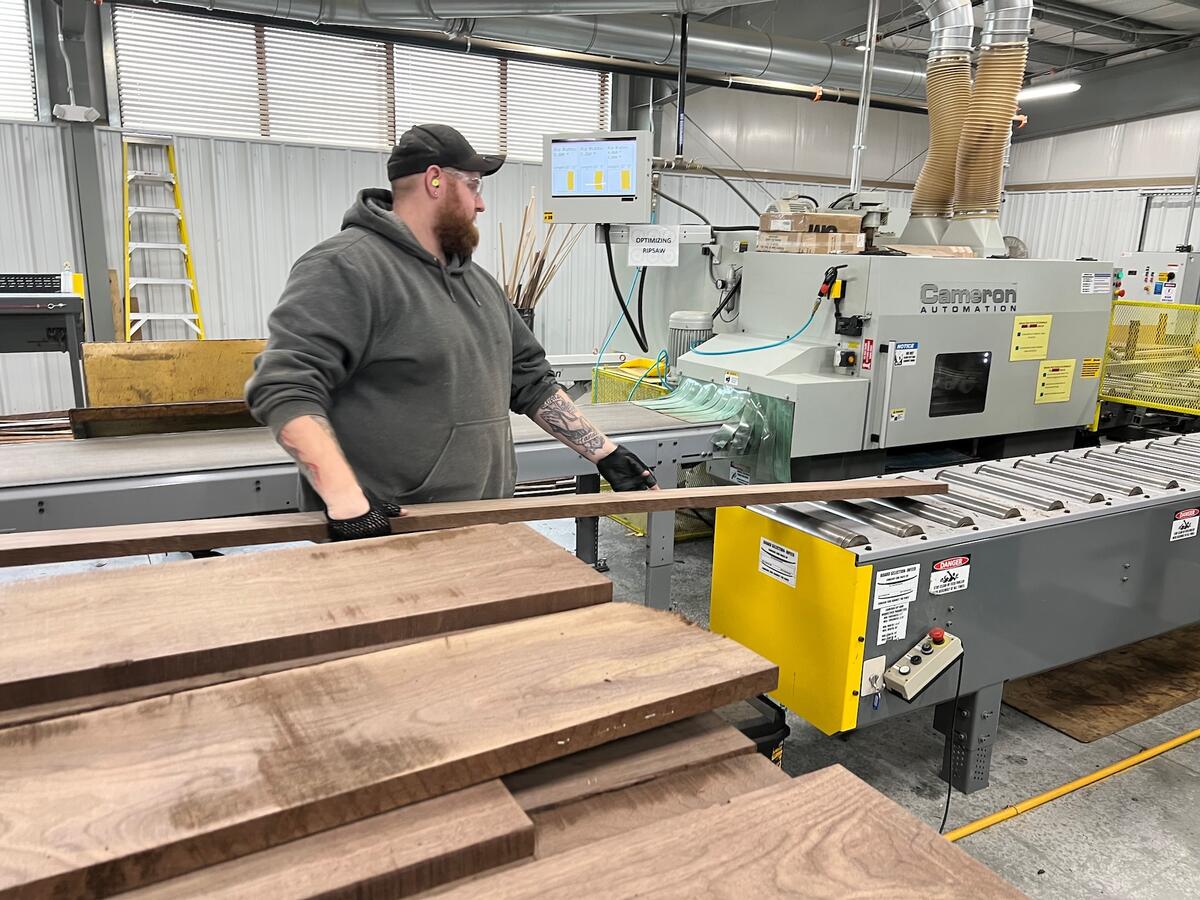
Hiring Is Weak
Here and there, some manufacturers have added jobs that they can point to as a direct result of the new tariff landscape. Schnitzius has grown American Leather’s workforce by roughly 60 employees since April, and she says the company could plausibly double that number by the end of the year. Gibbons says Revolution Fabrics has added 30 people thanks to new tariff-related business.
However, the industry has seen losses as well. The July collapse of century-old Michigan-based manufacturer Howard Miller, which its owners partly attributed to tariffs, saw the elimination of roughly 170 jobs, including 40 in North Carolina. Overall, conversations with executives and industry consultants suggest that many producers are still bruised by the labor challenges of Covid, and are wary of adding headcount in a time of instability. “If you’re doing flat, you’re doing well,” said one.
Government statistics suggest that textile production jobs saw a modest increase over the summer (mills were down, cut-and-sew operations were up), while furniture manufacturing contracted, shedding 2,000 jobs between July and August. More worrying for domestic producers is the longer-term trend, especially in furniture. Over the last decade, the occupation has lost 44,000 jobs.
One wrinkle of the move to reshore American furniture manufacturing is that, even in the most optimistic version of events, tariffs won’t restore employment levels to the industry’s heyday in the 1970s and 1980s. That’s due in large part to advancements in technology and manufacturing techniques, which have made production, especially of case goods, less labor-intensive. Caperton’s company is a case in point. He bought the furniture business that became Gat Greek in the mid-1990s when it was doing $10 million in revenue. Since then, he’s grown that figure to $25 million, but only increased his staff from 130 to 165.
“[Part of it] is running the business wisely in a lean manner,” he says. “The second is technology. CNC machines have gotten wildly productive in the last 15 years—they’re phenomenal. They’ve allowed a renaissance that wasn’t around 20 years ago.”
Still, the idea of more American jobs in any number—especially in a region that lost so many so suddenly in the 1990s and 2000s—is a compelling prospect. “We have the ability to double our capacity in the coming years,” says Caperton. “And I think the [overall] domestic case goods industry could double what it does, and that would be a wild success. It’d be great for our employees, it’d be great for our communities. It’s going to take time, but that would be a significant success.”
Case by Case
It’s tempting to paint all domestic manufacturing operations with the same broad brush. In reality, each is grappling with a distinct set of opportunities and challenges. A case goods business like Caperton’s, which largely sources domestic woods and has only seen the prices of some imported components go up slightly, has not been deeply impacted by tariffs. Meanwhile, upholstery makers, which often rely on imported fabrics, are feeling the pain. Each company is playing its own game.
Sometimes multiple scenarios are playing out within a single company. That’s the case for North Carolina–based textile brand Valdese Weavers, a supplier that caters to a wide variety of buyers, from big retailers to individual designers. Valdese is a diversified business—it produces the majority of its goods out of domestic textile mills, while also bringing in parts of its assortment from overseas.
That range has allowed the company, which was founded in 1915, to stay nimble as the industry has changed radically over the decades. It also exposes it to the highs and lows of the current moment. Patrick Shelton, Valdese’s senior vice president of sales and marketing, says that as with many domestic manufacturers, the tariffs have started a lot of conversations—some are on the slow boil, while others have turned into real business.
“Some of it is working with new customers that have historically produced in China or Vietnam, and they’re asking us for help to figure out working domestically for the first time,” he says. “There are also retailers we’ve already worked with who, in an effort to minimize volatility, are leaning more heavily into our domestic production. … [The tariffs] have definitely created the opportunity for us to be more meaningful to existing customers, and have more intentional conversations with new customers.”
At the same time, the tariffs have presented difficulties. “We source yarn from 17 different countries. So even though 85 percent of our business is produced domestically, our costs are going up,” says Shelton. “It’s a challenge, because the expectation [from buyers] is that, working with a domestic producer, [tariffs] aren’t going to impact you.”
Overall, he describes the tariffs the same way many U.S. manufacturers do: a mixed bag. In the short term, there are new struggles to deal with, as well as new prospects. Hovering on the horizon is the possibility of real gains. In the middle distance, there’s a lot of uncertainty.
The Waiting Game
Despite the heated rhetoric around tariffs, the situation for many U.S. manufacturers is less dramatic. A surge in business has not materialized for most. On the other hand, the market has not taken a nosedive either. Many of the publicly traded furniture retailers just clocked surprisingly good financial quarters, and many of the same manufacturers who fear the impact of tariffs are seeing their business up for the year so far. That’s especially true in the high-end, where designers are still shopping.
The situation can look like a Rorschach test. If you believe that the tariffs are a much-needed shot in the arm for American manufacturing, this is a tolerable period of short-term pain that will lead to long-term gain in 2026 and beyond. If you’re on the other side of the fence, higher input costs and a wobbly market are a worrying sign of challenges to come.
But whether you think the new tariffs will help revitalize domestic manufacturing or drag it down, there’s widespread consensus that the tariffs themselves have to be stable before we truly find out. With a planned duty on all imported furniture scheduled to be announced soon, a Supreme Court case on the legality of the country-specific tariffs on the horizon, and further negotiations with China and India on the menu, that stability may be a ways off yet.




